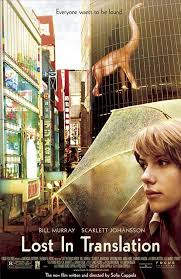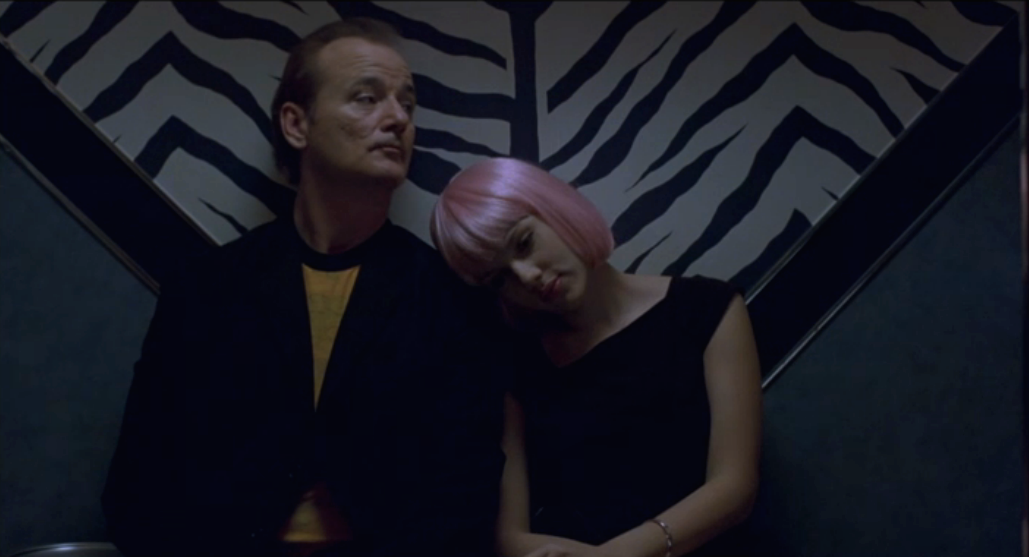 Happy 44th birthday, Sofia Coppola! I do love when kismet works in our favor. On this special day, we are celebrating Coppola’s second feature film, the 2003 critical hit Lost in Translation. (And, since it’s also my birthday, all pictures will be of Scarlett Johansson.) The film was nominated for four Academy Awards: Best Picture, Best Actor, Best Original Screenplay, and Best Director, which made Coppola the third woman to be nominated for Best Director. However, like her predecessor Jane Campion had a decade earlier, Coppola walked away with Best Original Screenplay at the 2004 ceremony. Not bad for a second film!
Happy 44th birthday, Sofia Coppola! I do love when kismet works in our favor. On this special day, we are celebrating Coppola’s second feature film, the 2003 critical hit Lost in Translation. (And, since it’s also my birthday, all pictures will be of Scarlett Johansson.) The film was nominated for four Academy Awards: Best Picture, Best Actor, Best Original Screenplay, and Best Director, which made Coppola the third woman to be nominated for Best Director. However, like her predecessor Jane Campion had a decade earlier, Coppola walked away with Best Original Screenplay at the 2004 ceremony. Not bad for a second film!
The setup sounds familiar. Bob (Bill Murray in the middle of a career renaissance) and Charlotte (Scarlett Johansson on the cusp of superstardom) are two insomniac Americans in a hotel who meet accidentally over and over before they finally decide to meet on purpose. Bob is a movie star in Japan to shoot a whiskey commercial that he hates. Charlotte is the wife of a photographer whose job and ego keep him busy. Once the two wanderers meet, they fall into an intense friendship made all the more exciting and sad for the knowledge that it exists only as long as their stay in Japan does.

It could be a romance, but Coppola doesn’t choose the conventional route. Instead, she meanders through a character study, aided by strong performances by Murray and Johansson, who are as expressive in silence as when speaking. However, while Bob and Charlotte’s May/December friendship is the center around which the film turns, they are not Coppola’s only focus. Japan is as complex and colorful a character as the two Americans exploring it.
Lost in Translation displays Japan from an outsider’s perspective: exciting, bright, busy, scary, and lonely. Coppola has a talent for showing the intimate in impersonal spaces: the crowded streets, the smoky bars, and especially the anonymously bland rooms of the hotel make up the strange new world that Bob and Charlotte explore with alternating interest and isolation. Cinematographer Lance Acord lights interiors with diffuse, cold overhead lighting, which gives everyone - especially the craggy-faced Murray - a haunted look. The hotel itself becomes an isolating entity, separating our two main characters from Japan, but allowing them to watch it from a distance.

Coppola uses her two leads to explore different emotional and visual facets of Japan. Through Bob, we see the confusing, loud conventions of Japanese culture. Through Charlotte, we see the quiet beauty of the city. When they explore together, the joy and melancholy of these two perspectives play off each other, highlighting the humor of an emergency room misunderstanding or the solitary contentment of a shared cigarette in a karaoke bar.
As with Sofia Coppola’s first film, Lost in Translation does not feel like a sophomore effort. The movie works as a continuation of The Virgin Suicides, Coppola’s first film, which had also expressed melancholy tone and themes of isolation through enigmatic characters and an evocative location. However, unlike that film, in Lost in Translation Coppola peoples her movie with characters who feel real. Bob and Charlotte are quietly messy people with tumultuous inner lives which only occasionally reach the surface. They are both searching for meaning, but find each other in the meantime. Coppola’s second film is a slow-but-mature, bright-but-sad meditation on loneliness. So her next film, made 3 years later, will be a complete turnaround.


Up Next:

5/21 - Marie Antoinette (2006) - Coppola courted her first bit of controversy for this anachronistic, pop-fuelled biopic, again starring Kirsten Dunst as the infamous monarch. (Amazon Instant Watch)
5/28 - Somewhere (2010) - Sofia Coppola turns inward for inspiration with a movie about a famous actor and his daughter living at the Chateau Marmont. (Amazon Instant Watch) (Netflix)